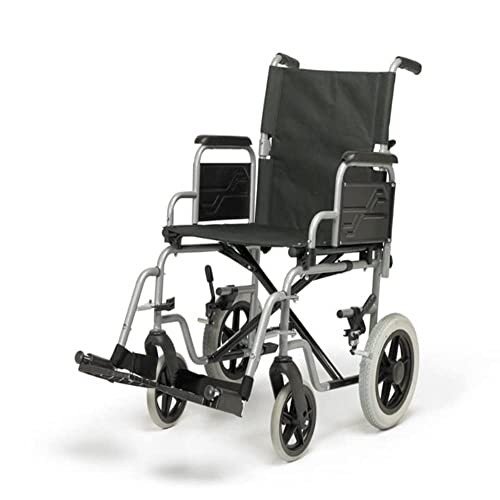A Comprehensive Guide to Buying a Mobility Scooter
Mobility scooters have ended up being an important tool for numerous people looking to boost their independence and mobility. With a vast selection of designs and functions available, selecting the best mobility scooter can be intimidating. This short article offers a helpful guide to assist customers navigate their options, evaluate their needs, and make an informed purchase.
Understanding Mobility Scooters
Mobility scooters are electric automobiles created for individuals who experience mobility obstacles. They are particularly useful for elders, those with impairments, or individuals recuperating from injuries. Mobility scooters can vary widely in terms of design, features, and prices.
Kinds Of Mobility Scooters
Before starting a purchase, it's important to understand the different types of mobility scooters available:
Three-Wheel Scooters:
- Generally more maneuverable in tight areas
- Lightweight and portable
- Perfect for indoor usage
Four-Wheel Scooters:
- Offer higher stability and balance
- Appropriate for outdoor use over numerous surfaces
- Typically have a longer battery life
Foldable/Portable Scooters:
- Designed to be quickly carried and saved
- Can frequently suit the trunk of a cars and truck
- Perfect for those who travel regularly
Heavy-Duty Scooters:
- Built to accommodate bigger individuals
- Frequently included more robust functions for outside usage
- Normally equipped with bigger batteries for prolonged range
Elements to Consider When Buying a Mobility Scooter
1. Weight Capacity
Choose a mobility scooter that can support the user's weight. The majority of scooters have a weight limitation varying from 250 to 500 pounds. It is essential to make sure that the scooter can accommodate the user easily.
2. Range and Battery Life
The variety is how far the mobility scooter can take a trip on a single charge. Common ranges vary in between 10 to 30 miles. Consider the user's daily activities and choose a scooter with an ideal range.
3. Scooter Dimensions
Think about the size of the scooter, including its weight and dimensions. A more compact scooter might be ideal for narrow corridors and tight areas, while larger designs use extra stability and comfort.
4. Surface Capability
Examine where the scooter will mostly be used. If the user prepares to travel mostly on pavement, a lightweight model may be adequate. Nevertheless, if the user requires to traverse gravel or unequal surfaces, think about a four-wheel scooter constructed for off-road usage.
Leading Features to Look For
Comfort
- Adjustable Seats: Look for scooters with cushioned and height-adjustable seats to make sure comfort throughout travel.
- Armrests: These improve security and assistance while browsing.
Security and Visibility
- Headlights and Taillights: Essential for nighttime use.
- Turn Signals and Reflectors: Improve visibility and safety while on the roadway.
User-Friendly Controls
- Joystick or Drive Controls: These must be user-friendly and simple to control.
- Easy-to-Read Displays: A control panel that shows battery life, speed, and range can enhance the user experience.
Additional Features
- Storage Compartments: These use included benefit for bring individual products while on the go.
- Weather Protection: Consider models with rain covers or windshields if utilized in variable climate condition.
Expense Considerations
When budgeting for a mobility scooter, rates can range anywhere from ₤ 500 to over ₤ 5,000 depending on the model, functions, and brand. Extra costs may include:
- Extended Warranty: Protects against defects and can conserve cash in the long run.
- Devices: Optional functions, such as upgraded seats, lights, or storage services.
| Feature | Cost Range |
|---|---|
| Fundamental Models | ₤ 500 - ₤ 1,500 |
| Mid-Range Models | ₤ 1,500 - ₤ 3,000 |
| High-End Models | ₤ 3,000 - ₤ 5,000 |
Funding Options
Many sellers use financing plans, and some local government initiatives might provide grants or help for those in requirement. Examine potential financial support with community resources or mobility service organizations.
FAQs about Buying a Mobility Scooter
What is the difference between a mobility scooter and a wheelchair?
Mobility scooters are motorized and permit users to navigate separately, while wheelchairs may need physical assistance or manual operation.
How do I maintain a mobility scooter?
Regular maintenance includes examining battery life, cleaning the scooter, and checking tires and brakes. Constantly describe the user manual for specific standards.
Can mobility scooters be used indoors?
Yes, lots of designs are developed for both indoor and outdoor usage. However, three-wheel scooters tend to be much better matched for indoor navigation due to their tighter turning radius.
Are mobility scooters covered by insurance coverage?
Some insurance coverage plans cover a portion of the costs for mobility scooters if they are considered clinically essential. Contact your provider for specific details.
How fast can a mobility scooter go?
The majority of mobility scooters have an optimal speed ranging from 4 to 8 mph. Nevertheless, the appropriate rate may vary depending upon regional guidelines.
Buying a mobility scooter can considerably enhance one's self-reliance and quality of life. By understanding the types, features, and costs connected with mobility scooters, prospective purchasers can make knowledgeable choices that match their requirements and choices. Visit Home Page and comprehensive research are essential to ensuring complete satisfaction with this essential investment.

